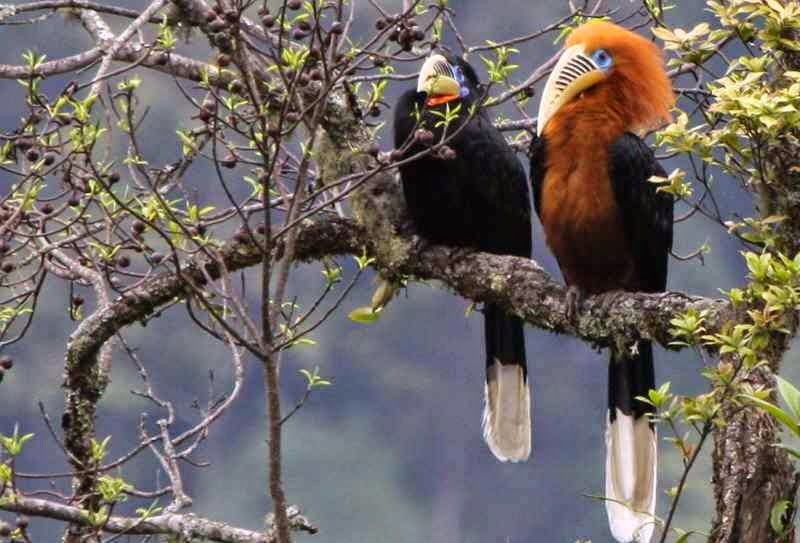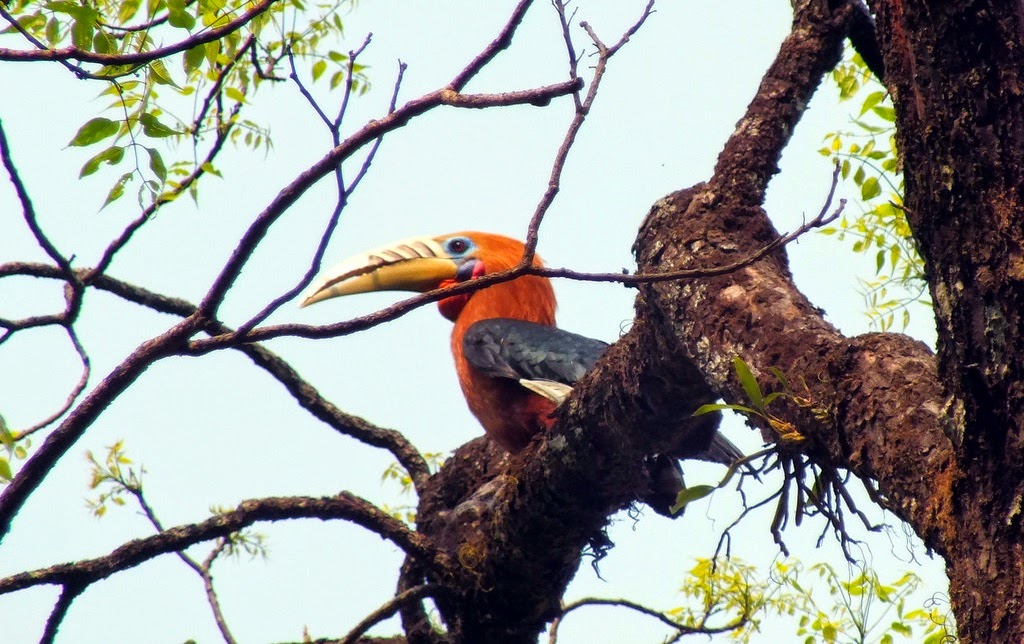Rufous-necked Hornbill (Aceros
nipalensis) is a beautiful species of hornbill in the northeastern Indian
Subcontinent and Southeast Asia. Rufous-necked Hornbill numbers had declined
significantly due to habitat loss and hunting, and it has been completely
extirpated from Nepal. It is projected that there numbers are now less than
10,000 adults remaining, with a length of about 117 centimeters, it is amongst
the largest Bucerotine hornbills. The under-parts, neck and head are rich Rufous
in the male, but black in the female. The head, neck, and lower body of the
male are colored Rufous, with deeper coloration on the flanks and abdomen.
However; the middle primaries and the lower half of the tail are tipped white. And
the rest of the hornbill's plumage is a glossy dark-green and black. The specie
lower tail-covert feathers are colored chestnut mixed with black. Whereas on
the other hand “The female”, are black, except for the end-portion of her
tailand the tips of the middle primaries, normally are white. Juvenile
hornbills look like adults of the same sex, but lack the ridges at the base of
the upper beak. The beak absences a true caique but is thickened at its base. Rufous-Necked
Hornbill has a number of dark ridges on the upper beak which are lacking in the
young and increase in number with age up to about seven. The commissure of the
beaks is broken for both sexes.
While mainly a bird of ridged and
hilly forests, primarily broadleaved forests at altitudes of 150–2,200 metres,
it has also been recorded in dry woodland. The nesting period starts from March
to June and the trees being preferred are tall and having broad girths. There
is indication to suggest the Rufous-necked Hornbill communities move seasonally
between one forested areas to another to avail of the differing abundance of
fruiting trees due to local conditions. Therefore; egg shape is broad oval,
compressed slightly towards one end, so as to be slightly pyriform. However;
shell is strong and thick, but coarse and completely glossless, all over pitted
with minute pores. In color it is a very dirty white, with a pale dirty
yellowish tinged, and everywhere obscurely stippled, when carefully observed,
with minute purer white specks, owing to the dirt not having got down into the
bottoms of the pores. In Arunachal Pradesh, Rufous-necked hornbills have been
hunted by tribal for their feathers and beak. Rufous-Necked Hornbill can found
in Bhutan, China, Myanmar, Laos, Thailand, Vietnam and northeast India, the
rufous-necked hornbill has suffered a massive population decline, and is believed
to be extinct in its historical array country, Nepal. The rufous-necked
hornbill existing in little numbers in a large number of reserves, sanctuaries
and national parks across its range, but the popular of these areas would
benefit from improved management systems.

















No comments:
Post a Comment